#and mina/jonathan/dracula is the historical version
Explore tagged Tumblr posts
Text
Tagged by my dear @awildwickedslip! I think I did this one a couple years ago and it's not like I've published much fic since then, but it's maybe an interesting exercise to do it again without looking at my earlier answers first.
1. How many works on AO3?
115.
2. Total word count on AO3?
320, 935.
3. Top five fics by kudos?
Shattered Mirrors - Jonathan in Dracula's castle, Yuletide story (2009) - 376
Make It Through the Wintertime - Hadestown!Persephone backstory, Yuletide story (2016) - 345
To Burn the Castle Down - Jonathan kills Mina angst, really melodramatic (2008) - 312
Compromise - Mina/Dracula/Jonathan darkest timeline train story, the start of my only completed novel length fic ever (2009) - 273
Minor Initiations - basically the same premise as Compromise with Mina and Jonathan's roles reversed. and the story is much more of a mess. (2009) - 231
I included the actual kudos numbers because I rather appreciated that @awildwickedslip did; there's something interesting about that demystifying transparency.
You'll see that these are almost all 15+ years old, with the one exception being the fluke of writing a Yuletide story for what was at the time about to become a pretty popular musical. 20 years of writing in extremely tiny fandoms!
4. What fandoms do you primarily write for?
Historically it's been overwhelmingly Dracula alongside scattered multifandom endeavors of which Shakespeare plays and various Greek mythology versions have been the closest to consistent. I now have substantial WIPs in other fandoms which for a change were created less than 100 years ago, and we'll see what happens there.
5. Do you respond to comments?
Somewhat erratically. I do try! I feel so fortunate with the comments I receive.
6. Angstiest ending?
I think most of my fics end with someone either dying or resigning themselves to some kind of life of profoundly restricted choices. Right now the one that's coming to mind is Enthralled By Destiny, one of my Sade stories which is also really a Bluebeard story.
7. Fic with the happiest ending?
I mostly write happy endings only when I get Yuletide assignments requesting them, and then I struggle all the way because it is just not my strength at all. This past year my assignment was quite literally to give Macbeth and Lady Macbeth a happy ending in which they didn't do evil things and I went sort of out of my mind about it but I did manage something. Caucus-Race, my 2019 Yuletide assignment for Alice in Wonderland, came more easily.
8. Do you get hate?
Not really. I'm lucky and write in tiny fandoms and also am pretty conflict avoidant on the internet. I've intermittently gotten some frustrating responses about the ways I write about abuse dynamics in my Dracula stories but not much for a while. I have a sense that in this post-Dracula Daily era there are some people who very much don't like the kind of fic I write, but that's fine as long as people keep it to themselves.
9. Do you write smut?
I do not!
10. Do you write crossovers?
Rarely, when I think there's something interesting to be said with them. I tend to get more crossover ideas than I actually write.
11. Ever had a fic stolen?
Not to my knowledge! I've read a few fics that seemed very clearly inspired by mine, but that's a sweet thing even if uncredited.
12. Have you ever had a fic translated?
Yes.
13. Have you ever co-written a fic?
Well...
14. All time favorite ship?
To write or read or just to have exist in the world? To write, by my numbers, it's certainly Mina/Dracula/Jonathan. There are a number of other ships which really compel me conceptually and for which hopefully I will write/finishing writing more in the future.
15. WiPs you want to finish but doubt you ever will?
So many. Philomela's Tapestry and Furious Docility were both things I posted with the knowledge that they would probably never be finished, just making the judgment call that if even a couple people got something out of reading the parts I had written it was worth putting them up. Of the dozens of unpublished WIPs whose fate is not yet determined it is perhaps better not to speak.
16. Writing strengths?
Interior experiences of violence (perpetrating or experiencing); selecting telling details; complicated relational dynamics; bittersweet moods
17. Writing weaknesses?
Smut; happy endings; characters speaking in more casual/modern tone/voice; finishing things
18. Thoughts on mixed language dialogue?
I don't feel great about doing it in a language I don't know well, and Ancient Greek dialogue is just show-offy and rarely useful. I've talked about this in fic commentaries, but several parts of Compromise have highly plot and character relevant moments of characters switching between languages, and I ultimately made use of the choice to keep it all in English to what I hope was interesting effect.
19. First fandom you wrote for?
Lord of the Rings. It was Sauron/Galadriel.
20. Favorite fic you’ve ever written?
For a long time to come I think it's going to be the Compromise series, taken as a whole.
Tagging, if they'd like to do it, @kareenvorbarra @child-of-hurin @mysikrolik @poorshadowspaintedqueens @tomatowrites
20 notes
·
View notes
Text
The Invitation (a small side analysis of the 2022 film)
Okay, spoiler, DeVille in The Invitation is Dracula. Now that is established a lot of people think this is an alternate universe / present day Dracula Story. I don't think so. I think The Invitation is set in a world where the original Dracula took place, probably was published as a work of fiction, and this is the sequel. Here are the reasons why I think the original events of Dracula still happened.
The location is New Carfax Abbey. This suggests a previous Carfax Abbey and that would be the property Dracula bought in the original novel. 2. The elderly couple are Jonathan and Mina Harker and their collection of photos suggests they've been around at least a century. In the Dracula novel, the vampires can change their apparent age based upon how much they feed. The implication here is clear. After the events of Dracula, Dracula recovered or was revived and turned the Harkers into vampires.
3. His butler is Renfield. Going by the name Mr. Field, he is Renfield on the end credits. In many film versions of Dracula, Dracula actually had half-turned Renfield so that though he was not a full vampire, he was Dracula's immortal familiar. 4. These English families have been serving Dracula for a long time, suggesting that Dracula did arrive in England in the 1890s the way he did in Stoker's novel. 5. Evie recognized who he was when he mentioned that his favorite name to go by translates to mean Son of The Dragon. (Dracula means Son of The Dragon). So Evie must know the literary Dracula, or at least the historic figure that the vampire was supposed to have once been.
The Invitation isn't a world where the original Dracula novel by Bram Stoker didn't happen. It's a world where Dracula survived the events of the Dracula novel and gained a small cult in England.
10 notes
·
View notes
Text
"'NOSFERATU' is superior to 'BRAM STOKER'S DRACULA'"
"'BRAM STOKER'S DRACULA' is superior to 'NOSFERATU'"
"'NOSFERATU' isn't 'DRACULA' - STOP COMPARING THEM"
1 - NOSFERATU [1922] was an unauthorized/illegal adaptation of 'DRACULA'. So much so that Stoker's wife [who was in charge of the estate] sued FW Murnau and the studio, won, and part of the settlement was to have every reel of the film destroyed. Had it not been for bootleggers of the time, the film would be completely lost.
2 - Orlok is LITERALLY based off of Count Dracula. So much so, that in 1979 when Werner Herzog remade the movie, he changed the names to the book canon [Orlok - Count Dracula, Ellen - Lucy, Hutter - Jonathan, etc.] because at that point, DRACULA had become public domain and the risk of being sued by the estate was no longer an issue.
3 - BRAM STOKER'S DRACULA has been hailed as one of the most if not the most faithful adaptation of the novel. While it took liberties [such as the direct ties to Vlad the Impaler and the love story between the Count and Mina], it otherwise held true to the settings and journal entries.
4 - Robert Eggars NOSFERATU is a faithful adaptation of the 1922 film that not only applies historical accuracy to costuming, lore, and settings, but also brings more to light about traditional vampire legends of Eastern Europe given Orlok's rotting appearance and vicious, amoral nature. He also appears more as a traditional Slavic nobleman [wearing thick furs, sporting a thick mustache, and demanding his title to be spoken from Hutter].
Point is this: NOSFERATU would not exist without DRACULA. DRACULA is inherent, apparent, and intentional in NOSFERATU's cinematic DNA. To say that Robert Eggars simply adapted DRACULA is a bit of an understatement considering not only does he adapt a version of DRACULA, he adapted one of the more book accurate depictions of the titular vampire while remaining true to the 1922 silent film.
Both movies are beautiful.
Both movies are wonderful.
Both movies can be loved at the same time.
It's not a contest ♡
19 notes
·
View notes
Note
for one thing I would say, like, there's a good chunk of people who do just find fictional played-completely-for-horror sexual horror erotic, some people's tastes run really intense and don't need there to be an extra tinge of it being deliberately played sexily. I tend to believe that's a more niche version of the fantasy so it doesn't account for everything, but there are certainly audiences that appeals to. another thing, I def agree that lucy and mina being attacked by dracula isn't written erotically, but I would say the roomates' big encounter with jonathan and a few of vampire-lucy's ploys with arthur are. maybe it's that a lot of the first adaptations and commentary were done by straight men who identified that the vamp girls were sexy but didn't really twig that it wasn't the same for big man drac himself?
yeah, i'll allow that the weird sisters were written more erotically, and so was lucy, but again, the big thing that's missing is a *climax.*
those are sexy close calls, they aren't allowed to actually progress to anything that's actually analogous to sex. it's like...a hint of sexy danger before it gives in to just plain old regular danger.
the scenes that DO have a "climax," when jonathan and lucy and renfield and mina are bit and/or killed, just don't tell us about those bits. there's no sense of rising tension finally snapping that characterizes erotic literature. i don't doubt that someone can wank to this, but at a certain point, when all the details are missing, you're just wanking to your own fanfic inside your head.
anyway mostly im just bitching about a very specific post that bugs the crap out of me because it got a lot of notes: op asserts that dracula is actually about homophobic repression and jonathan's time in castle drac is a ravishment fantasy, and then several people who have NOT read the book go on to talk about how ravishment fantasies work and their historical popularity. and it pisses me off because all of the additions were good and interesting discussion of this kink, while the op was absolute dogshit analysis.
12 notes
·
View notes
Text
everything continues to be terrible so I’ve just... launched myself head first into thinking about Sybil and her idiot husband and their goth boyfriend okay bye
#sybil and the boys#it's always sybil's turn with the brain cell and that is a FACT#anyway 'married couple and their goth' is the best ot3 dynamic so there#sev/cissy/lucius is the evil version#and mina/jonathan/dracula is the historical version#i said what i said okay nothing about any of this should be a surprise to you lot
18 notes
·
View notes
Note
I felt that whole ramble in my bones, like give me a Dracula adaptation made by Jordan Peele, give me a historical adaptation made by Robert Eggers, give me a fucking comedy/horror made by both Guillermo del Toro and Baz Luhrmann, give me a Mina and Lucy centered version made by Mary Harron, give me a manga version made by Junji Ito, just WHERE IS THE HORROR
me, knocking at the door of the local Horror Orphanage, cradling the entire Dracula cast in my arms: Please, I beg you, take in these poor mistreated children, they have been starved and menaced by the cruel lashings of the cinema
Lucy: HOT SINGLES IN YOUR AREA WANT TO BE RAVISHED BY VAMPIRIC STALKERS CLICK THE LINK BELOW--
Mina: I’m getting married and miserable about it! If only I had an undead hunk to free me from these Victorian shackles
Jonathan: -is a broom wearing a hat-
Dracula: Me? Spending 99.99% of my time exclusively finding new ways to kill, torment, and/or enslave everyone I come in contact with while commanding occult powers beyond the ken of man? Perish the thought! I just need the love of a good mortal maiden and sex from a naughtier one ;) to make me happy <3
Horror Orphanage: By the grace of Craven, Carpenter, and Cronenberg, we shall do what we can.
#please won't someone give this horror novel a good home??#dracula#lucy westenra#mina murray#mina harker#jonathan harker#dracula daily#adaptation#horror
116 notes
·
View notes
Text
One framework for understanding Dracula as a novel is as a celebration of capitalism. Now I know that might rub some of us commie queers the wrong way but it is, I think, an essential part of understanding the themes and ideas of the book. I'm going to discuss some of the things I researched while writing my undergrad thesis on Dracula. I will mark spoilers for dracula daily with *** at the beginning and end.
So first let's look at the historical context for the book. Dracula is published in 1895. Stoker's contemporaries were Oscar Wilde, Kate Chopin, and Sir Arthur Conan Doyle. Most of the literature at the time was greatly grounded in the relationships between aristocracy and bourgeoisie. People were beginning to see the absurdities of the rules that had ruled the regency era (think Jane Austen). Capitalism was new and exciting because it meant people could change their class status. Wilde did this by mocking the aristocracy's ideas about breeding and pointing out the hypocrisy of the middle class that spouted puritanical ideas of the nuclear family. Doyle was heavy into spiritualism and hated Sherlock Holmes, but it is notable that the incredibly popular protagonist was a man shirking the nonchalance of aristocracy and instead more or less starting a business.
In this lens, we can view the novel Dracula with a little more understanding of why Dracula himself is so terrifying and why characters like Lucy and Mina are portrayed the way they are.
Dracula and Lucy both represent Aristocracy in different forms. Dracula represents the feudalistic Aristocracy of eastern Europe. Now, it's worth noting that Stoker himself was Irish and would have experienced his fair share of racism as Ireland was a British colony. However, people in the area at the time would have viewed Romania and Hungary similarly to how people today view Afghanistan. And Indeed, Afghanistan was also being colonized at the same time. A modern version of Dracula might be about an evil Djinn trying to move to America and trick people into making wishes.
Lucy represents what was quickly becoming the irrelevant aristocracy of England itself. Lucy is, in so many ways, the perfect Regency Heroine. In fact before the novel starts she is practically living in a Jane Austen novel. She has multiple men courting her, she is pretty and well liked, but she doesn't actually...do anything. Her entire existence is to be pretty and sweet and eventually become a wife. The only time we really hear from Lucy is in her description of the proposals she has received. And this letter is honestly such a caricature of the regency era heroine it's kind of funny. She is dramatic to the point of impropriety, she is devastated to have to reject two men. And yet she doesn't talk much about Arthur at all, who she apparently loves. She gives all her time and voice to melodrama, the kind readers of Dracula would have been annoyed with. I don't know if it has been mentioned yet but ***we will soon learn that Arthur is the heir to a lordship, and therefore Lucy's acceptance of him and rejection of the others shows her preference for the old Aristocracy. She rejects the good hard-working men, of whom we have great details, and instead chooses a man of aristocracy whom we now know nothing about.***
Let's look at some of the other characters. Jonathan himself is a solicitor (a lawyer) and he doesn't even seem to be a senior partner. He is, really, a normal person. However, he seems ambitious as he is willing to go on this incredible expedition for work. I think we can understand that his boss is setting him up to inherit the business. Dr. Seward is already in charge of a whole hospital, another ambitious professional. And Quincy, of course, is the ultimate capitalist, an American Cowboy who has surely had countless adventures in America and made his fortunes to spend in England.
Of course Mina is the most interesting character. In this time, the role of women was more in flux than ever. Stoker purposely has mina reject the "new woman" which was a way feminists were describing themselves at the time in order to set his heroine apart from them. However he clearly does not approve of Lucy's version of womanhood either. Mina is a useful wife. She does not have a career of her own but is rather an asset to her husband. This is in stark contrast to the aristocratic who is really meant to be an ornament and if anything is a burden to the husband. Her role in society was to show off wealth. With Mina, Stoker represents a new version of womanhood and wifedom wherein she is more or less a secretary to her husband. She does everything she can to aid him in his career and therefore benefit their family. And of course, before she met Jonathan she did not idle away, she was a teacher at a school.
And of course Dracula himself represents aristocracy at its worst. He is bound by old-world rules, a specter of a society that believes in things the English have forgotten about. As England becomes more democratic, other countries like Austria-Hungary are solidifying their aristocracy in what would later become fascist movements. (The core basis of facism is to have an industrialized aristocracy). And Dracula represents the fear of this coming into England. Some of this fear may be founded, but most of it is racism. In fact, in order to colonize this region of the world, the British created deals with local lords to overthrow their King, destabilizing the nation. They would then double cross these lords. So it was a genuine fear at the time that one of these lords might seek revenge on the British public. In a similar way to how Action movies today often have a terrorist on a vendetta due to drone strikes killing their family.
Dracula very much represents the dual threat of returning back to an aristocratic nation and the threat of colonized lands coming back to punish the atrocities faced there. Jonathan's initial description of the area as "picturesque" shows the naivete many felt about British Colonization and interference. But under the surface lies the sinister nature of a force that is coming to destroy the normality of British life. I think it is important to acknowledge this while we are reading. We do not have to buy into it though.
There is more to the story and this theory, but this, I think covers what we've currently seen.
As we continue to read dracula daily, I think this lens could be helpful to anyone reading along.
105 notes
·
View notes
Text
Weird dream from last night that I realized did not contain nearly enough Proper Dracula to be tagged/considered Dracula daily but have at it.
The bullshit dream included:
Me being in Japan for Reasons; Thor and Jane showed up at some point, made out, and there was some kind of retroactive reveal that Jane becoming Thor meant she was now also Aldrif and so Jane/Thor was now incest, which the dream said was Accurate To Something Historical. (Note: Aldrif is a Marvel character. This plot point did not make sense.)
A Dracula situation that reimagined what should have been the novel's events in the post-WWI period of The Mummy (which we arrived to via Thor things, somehow)
but also specifically in a large mountain castle overlooking a pine tree valley… in Wyoming.
Mina and Jonathan were there, but also Dracula had a wife? Which I would assume came from Castlevania except for the fact that the dream was pretty clear on this woman being only vaguely aware of her husband's monstrosity and repeatedly trying to get people to leave for their own safety. Significantly more Stepford than Castlevania's Lisa Tepes.
There is a plot-relevant white fox running around the half-neglected gardens for some reason.
POV (unclear who is POV, presumably Mina) of cat and mouse with Dracula and his vaguely Castlevania-personality minions, including an evil elf lady (pale gray skin, white hair, black clothes and stained fingers) with a sword, a giant wolf man, and what might be a troll made of living stone.
Something? Happened? And everything shut down and entered a stasis for almost a hundred years.
POV woke up and found that the building had been abandoned for years and was recently purchased and converted into a beauty spa/getaway where people go for a week to Become The Best Version of Themselves
Highkey implications that all the food (mostly various puddings in tiny plastic 'tear-off-the-top' single-use containers) was drugged for brainwashing purposes (not in a cult way but in an Aliens Or Supernatural Bullshit way).
The Elric brothers showed up to investigate and everyone was politely ignoring the fact that one of them was a giant suit of armor even though it was a clear violation of the retreat's rules
POV is still trying to figure out what the fuck is going on. Tahani al Jamil is also there. She thinks the spa is Just Amazing. She is never seen again, because the plot moves on to other things.
Elric brothers bust the brainwashing situation. Unclear how. Castle is gutted and starts being converted into a museum.
Elrics are gone. POV character wanders about. Some of the statues look Familiar.
Statues are actually Dracula-and-minions in stasis. They are starting to wake up. One of them starts swinging. The others are now attacking. The entire castle is in full evac mode into the city that has sprung up in recent times.
On the way out, POV spots a toddler. Picks them up and gets them out of the way of Possible Trampling By Panicked Crowd. Toddler is FIGHTING and BITING.
Dracula shows up. Looms. Takes the toddler, who is apparently (either de-aged or retroactively?) the werewolf and now his adopted son.
Dracula and co fuck off without bothering anyone again because? Reasons.
Woke up
#cult mention#incest mention#dracula#vampires#FMA#The Good Place#werewolves#Night at the Museum#phoenix talks#dreams
18 notes
·
View notes
Text
Count-Down: Number 6
Welcome to Count-Down! All throughout the month of October, I’ve been counting down my Top 31 favorite portrayals and reimaginings of the King of the Vampires, Count Dracula! We’re getting closer to the end. Today’s pick, Young or Oldman, is always interesting. (No, I make no apologies for that TERRIBLE joke.) Number 6 is…Gary Oldman.
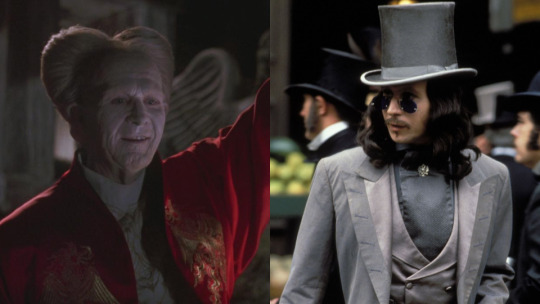
Oldman played Dracula in the 1992 adaptation of Dracula – often referred to as “Bram Stoker’s Dracula” – directed by Francis Ford Coppola. While not a perfect film – at times it’s perhaps a bit too over-the-top for its own good, and Keanu Reeves, bless his heart, just isn’t fooling anybody as Jonathan Harker – it’s widely regarded as one of the best and most accurate takes on Bram Stoker’s novel put to film. It keeps nearly every major detail from the book, in terms of characters and plot, while also adding in a fair share of things all its own, all within a runtime just a little over two hours, including credits. That’s a pretty impressive feat, and the film pulls it off with a lot of style and a unique aesthetic and directorial flair all its own. As we’ve seen already, this portrayal of the Count of Transylvania was not the first to make use of the “starts old then turns young” idea presented in the novel, nor was it the first to reinterpret Dracula as a more tragic and sympathetic villain, with a romantic sensibility, NOR was it even the first to present the idea of the fictional Dracula and the historical Dracula as being one and the same within this universe. Yet by combining ALL these elements – making Dracula still a frightening villain but one who you could feel sorry for and understand, and with these other little quirks added as well – the makers of this picture created what many consider to be something of the modern day equivalent to Bela Lugosi or Christopher Lee. Oldman’s is one of the most often spoofed and referenced takes on Dracula, and more modern takes seem to draw blood (so to speak) from this film than from any other recent adaptation within the past two decades. A big part of this, naturally, is Oldman’s performance, as well as the many creative choices surrounding his portrayal. Oldman’s Count is one of my top three favorites of his performances, and the only word I can think of when I think of his take on the Count is “decadent.” His Dracula is both tantalizing and terrifying all at once, with an unhinged mentality and a dangerous temper, yet a sort of alluring vulnerability underneath it all. He’s just as believable and fascinating cackling cruelly at his capture of Jonathan as he is caressing Mina Harker and cooing sweet nothings to her. He is a tragic and sad figure, but a deeply unsettling one as well; the raw sensuality of the vampire is captured here in rather carnal glory, but so is the real dread and horror the monster can spread. So often, especially nowadays, attempts to make Dracula more sympathetic and sad lead to making him more heroic, or turning him into a figure of fun. Oldman does neither, and it is this wonderful blend of sinister cruelty and genuine love and passion that makes his take on the vampire king so compelling. The film also goes out of its way to avoid making Oldman’s Dracula LOOK like the typical take on Dracula, and while I’ve never particularly liked the “Old Dracula” look in the film (it always makes me think of the Queen of Hearts), he looks rather dashing in his Victorian getup in later parts of the picture. He’s pretty much everything you could want Dracula to be: a savage beast, a powerful ruler, and a darkly mysterious lover, all rolled into one. Honestly, I feel bad for not placing Oldman higher…but the fact of the matter is, while in many ways he’s the most “complete” Dracula, he’s not necessarily the first version I think of when I think of Dracula in general. Which is to say, this isn’t a version I’m likely to reference in writing very often, myself, or take much inspiration from in terms of makeup and costume. He stands on his own and is iconic in his own way, but I think other versions just come quicker to the forefront of my mind when I think of the name “Dracula.” He’s absolutely brilliant and totally unique, and I cannot recommend this portrayal enough…but after much deliberation, I felt the one in the Top 5 were simply more iconic to me PERSONALLY, if that makes sense. On that note, tomorrow we move into the Top 5! I hope you’ll join me as I discuss my 5th Favorite Dracula! Hint: Often Imitated, Never Duplicated.
#count-down#top 31 draculas#dracula#count dracula#bram stoker's dracula#coppola dracula#dracula 1992#halloween advent calendar#october special#number 6#francis ford coppola#gary oldman
39 notes
·
View notes
Note
Hey! I'm thinking of reading Dracula, and knowing that's your eternal hyperfixation, I wanted to ask your thoughts, if you had any comments, suggestions, ect.
HEY WHY DIDN’T I SEE THIS SOONER I’M SO SORRY FRIEND
okay okay okay okay (...several people are typing...) SO
the first thing you should be aware of when reading Dracula is that it’s quite Victorian, so you might find it easier, especially on a first read, to get an annotated version (the Norton Critical Edition version is quite good) that puts footnotes in to explain all the outdated references to like, London penny-meat merchants and stuff. I would say it’s significantly easier to read than Lord of the Rings, but because it was written 200 years ago the difference in language means it’s not a simple read. (However, if you have absolutely any attraction to the Gothic aesthetic, Dracula is so very much worth the brainpower to slog through the rougher sentences. Like. “...the courtyard of a vast ruined castle, from whose tall black windows came no ray of light, and whose broken battlements showed a jagged line against the moonlit sky.” The whole book is like that. A bit stilted to contemporary readers, but also breathtakingly spot-on in its Spooky Factor.)
the second thing you should be aware of is that Dracula is extremely gay, but in a Tormented Victorian Closeted way. There’s a part where Jonathan climbs out a window that just. It’s uh. The descriptions are very,, metaphorical-sounding. Again, the whole book is like that, and sometimes it’s very fun and sometimes (lookin at Lucy’s whole thing) it’s significantly more unsettling if you pay attention to the weirdly sexy descriptions of how the protagonists interact with the vampires, but I think that’s part of what I find so fascinating about Dracula--it’s unsettling and strange and the pieces don’t fit together clearly, and I still don’t know quite what to make of it, but all the same the feeling of what Stoker’s saying comes through quite clearly. There’s a reason why so many Dracula adaptations have this narrative of a protagonist falling in forbidden love with the tormented Vampyre, yknow? There’s something so unmistakeably sympathetic about the character of Dracula, even when the narrative of the story goes out of its way to establish that he has no redeeming qualities or even proper personhood, that he’s just a monster. Because there’s something about the story (even without getting into the whole “Mina and Jon murked their boss” thing) that makes a reader wonder if that’s really the whole truth. If there isn’t something tragic about Dracula. If there isn’t something in him, if not of goodness, then at least of sorrow, instead of only fear.
Anyway I digress but I think we all knew that was gonna happen; point is: Jonathan and Dracula definitely had sex, Mina and Lucy were definitely in love, Seward’s got something weird goin on with the old professor (and also he’s just very weird, full stop. sir. sir please stop experimenting on your asylum inmates. sir i know this is victorian england but please Do Not), and Quincey, well, Quincey is an American cowboy with a bowie knife, and I think that’s all we really need to know.
ok and! the third thing you should be aware of is The Racism. Imperialist Britain, yo. Bram Stoker was Irish so like, it isn’t half as bad as some other authors of his time period (Rudyard Kipling anyone), but the racism is real and I don’t wanna gloss over that. The g**sy slur is used with abandon for a huge assortment of people groups, there’s a tacit as well as overt acceptance of the idea that West is superior to East, and because the educational system where I grew up is a joke and I can only learn things if I accidentally fall down the wikipedia hole of researching the insect genus hemiptera, i genuinely still don’t know how accurate the extensive history of Romania recounted in the first third of the book actually is. Oh also casual and blatant anti-blackness is verbalized by a character at least once. I’m pretty sure the racism has a metaphorical place in the framework of Dracula’s storytelling, but I couldn’t tell you what it is because I am not going to bother putting myself in the mindset of a racist white Victorian man. This is the mindset I am trying to unlearn. So: read with caution, critical thinking, and the double knowledge that even as the narrators are meant to be unreliable, so too is the author himself.
Finally, regarding interpretation: so personally I’m running with the opinion that Dracula is, at least partly, a metaphor for Stoker’s own queerness and internal conflict re: being queer, being closeted, and watching the torture his friend Wilde went through when the wealthy father of Wilde’s lover set out to ruin his life for daring to love his son. Whether this is true or not (I think it’s true, but hey, that’s analysis, baby), you can’t understand Dracula without knowing the social context for it (as with all literature--the author isn’t dead, not if you want to know what they were saying), and the social context for it is:
- Stoker was friends with Wilde, growing only closer after Wilde was outed
- Wilde was outed, as I said, because the father of his lover was wealthy and powerful and full of the most virulent kind of hatred. This is especially interesting because of how many rich, powerful parents just straight up die in Dracula and leave the main characters with no legal issues and a ridiculous amount of money, which is the diametrical opposite of what happened to Wilde
- Stoker idolized his mentor Henry Irving. Irving was a paradigm of unconventional relationships and self-built family, in a world where divorcees and children born out of wedlock were things to be whispered about in scandalized tones, not people to love and embrace. Irving was also famous for thriving off of manipulating those close to him and pitting friends against each other. Given the painstakingly vivid description Stoker provides for his titular vampire and how closely it matches Irving’s own appearance and demeanor, Irving was widely understood even at the time of writing to be the chief inspiration for the character of Dracula
- the book is dedicated to Stoker’s close friend, Hall Caine, a fellow writer whose stories centered around love triangles and accumulation of sins which threaten to ruin everything, only to be redeemed by the simple act of human goodness
- Stoker was Irish, but not Catholic (he was a Protestant of the Church of Ireland, a division of the Anglican Church). This may come as a surprise when you read the book and see All The Catholicism, Just Everywhere. Religion is actually a key theme in Dracula--most of the main characters start out your typical Good Victorian Anglican Skeptics, and need to learn through a trial-by-fire to trust in the rituals and relics of the Catholic Church to save them from Dracula’s evilness. Which is interesting. Because not only do these characters start off as dismissive towards these “superstitions” (in the same way they dismiss the “superstitions” of the peasant class on the outskirts of Dracula’s domain), but the narrative telling us “these superstitions are actually true!” cannot be trusted, when you know the author’s own beliefs.
(Bram Stoker is not saying what his characters are saying. This is the first and most important rule to remember, if you want to figure out Dracula.)
- The second-most famous character in the novel, after Dracula himself, is Van Helsing, whose first name is Abraham. Note that “Bram” is a declension of Abraham. What does this mean? I legitimately have no idea. But it’d be a weird coincidence, right? Like what even is the thought process there? “Oh, yeah, what should I name this character that comes in, makes overtly homoerotic statements willy nilly, and encourages everyone to throw rationality out the window and stake some vampires using the Eucharist? hmmmm how about ‘Me’”
ok wait FINAL final note: you legitimately do not have to care about any of this. I love Dracula because it has gay vibes and I love trying to figure it out, like an archaeologist sifting through sentence structure to find fragments that match the patterns I already know from historical research; but that’s not why you should love Dracula. The book itself is just straight up fun to read. Like I said, Stoker absolutely nails the exact vibe of spookiness that I love, the eerieness and elegance and vague but vivid fear of a full moon crossed by clouds at midnight. The characters are intriguing, especially Quincey gosh I love Quincey Morris but they’re very,, sweet? if i can say that about people i, personally, suspect of murder? They come together and protect each other against the terrible threat that is Dracula, and you don’t get that half as often as I’d like in horror media. I don’t even know if Dracula could qualify as “horror” proper, because it’s not about the squeamish creeping discomfort that “horror” is meant to evoke, it’s not the appeal of staring at a train wreck--it’s not horrifying. It’s eerie. It’s Gothic. It has spires and vampires and found family and cowboys, and to be honest, I don’t know what could be better than that.
#dracula#linden writes an essay#linden's originals#THANK YOU SO MUCH FOR THE ASK FRIEND I WILL ALWAYS WANT TO INFODUMP ABOUT DRACULA#ask linden
87 notes
·
View notes
Text
My top 15 love interests for romantic incarnations of Dracula (No, they’re not all Mina)

If I was to do a list of favorite love interests for Dracula it would be...
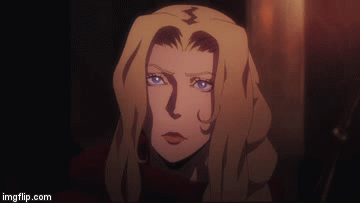
Keep reading for a full list...
16. Bonus: Lydia from Dark Prince: the true Story of Dracula.
I list this one here because she’s technically an historic figure and the rest are fictional so I am not sure if she should count or not. The historic Dracula’s first wife’s name has been lost to history even though the river tributary under Poenari Castle was named for her. The film Dark Prince: The true Story of Dracula starring Ruldolf Martin names her Lydia.
Though this film is mostly historic the ending implies that the two are both vampires and walking together through eternity.
Vladislaus Drakuyla AKA Vlad III of Wallachia, AKA Vlad Tepes (The Impaler)’s first wife died by suicide and the film hinted that this might have been enough to enable her to come back as a vampire.
Right before Vlad’s assassination in 1776 or early 1777 (at age forty-five or forty six) in the movie we hear her voice, which suggests she’s either waiting for him or has set into motion turning him into a vampire to be with her.

15. Sir Integra Hellsing from the Hellsing.
In the manga and anime Hellsing (and Hellsing Ultimate OVA), instead of having been destroyed by Doctor Abraham Van Helsing after the events of the Dracula novel, Dracula was instead captured and through arcane means bound to serve the Van Helsing bloodline for eternity. The family founded the Hellsing organization for fighting monstrous threats. Dracula took on the name Alucard (his own name spelt backward) and may have gone slightly crazy...
He became fiercely loyal to Integra Hellsing, the most recent descendant of Abraham van Helsing to become his Master. It is a very strange relationship to say the least...

14. Xander Harris from Buffy The Vampire Slayer.
In Buffy The Vampire Slayer season 5 we have Buffy encounter Dracula for the very first time. Here he is played by Rudolf Martin, the same actor who played Dracula in Dark Prince: The True Story of Dracula. In the episode Dracula takes Xander to be his Renfield-like henchman. At the end of the story Xander is free from Dracula’s spell however the story of their relationship is not over yet.
According to the Buffy: The Vampire Slayer season 8 comics Xander and Dracula have formed an unusual relationship. Xander taught Dracula about modern fun and pleasures and Dracula became more and more protective of Xander. When Buffy came and retrieved Xander (again) from Dracula, this time Dracula fell into a deep depression. Refusing to feed or take care of himself Dracula’s hair and claws grew and he deteriorated into his elderly form. When he found out that Xander was coming to pay him a visit, he hastily made himself presentable and de-aged to a more attractive / youthful appearance.
Now the two bicker like long time lovers. I ship it.
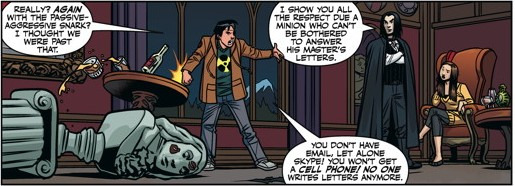
Oh, and Xander still calls him master, despite himself.
Further note on this one: Dracula is actually smart for NOT getting a smartphone. All cellphones can be traced via GPS. Do you really want a tracking device in your pocket while hunting human prey? You just made Blade and Buffy’s jobs a little too easy there. A practical vampire would not carry such a device while hunting.
Unfortunately this comic retconned a few important aspects of the TV show version of Dracula and even claimed he doesn’t actually conjure storms, but senses them coming (contradicting the beach scene from the Buffy vs. Dracula episode.) I wish people would stop de-powering Dracula.
13. Jonathan Harker (Multiple versions):
Dario Argento said that his version of Dracula was attracted to Jonathan Harker. And in Frank Wildhorn’s Dracula The Musical (Particularly the German production called Dracula das Musical) the scene “Fresh Blood” (Blut) is very errotic.
Fresh Blood (Blut) now featured Jonathan Harker being tied to a bed and his shirt removed as he’s fed upon by Dracula. But first by Dracula’s brides and grooms of the castle.
Also one of the lyrics in the English language version of the song indicates he wants Jonathan AND Mina as his and plans to make them both vampires. Thus reaffirming the polyamorous version of Dracula.
https://www.youtube.com/watch?v=slZps47LgKQ

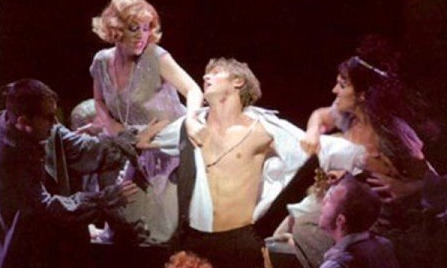
Dracula gets particularly “grabby” with him during his de-aging sequence.
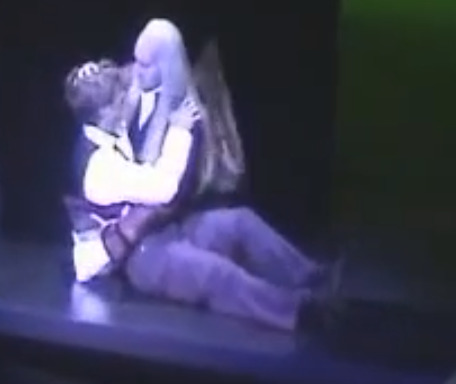

The relationship is pretty one sided...
12. Renfield (multiple versions).

The German production of Frank Wildhorn’s Dracula the musical (Dracula das Musical) has Dracula with brides and grooms as opposed to just brides. Despite this change toward bi or panasexuality, this particular relationship is very one sided.
Renfield is very much in love with Dracula in many depictions of the character. This mad man is obsessed with “The Master” and in the Frank Wildhorn Dracula musical he sings a song about how much he loves The Master and how wonderful he is. The reprise version looks as if Dracula is about to kiss him as they sing a slowed duet version of the refrain but this is where Dracula, instead, snaps his neck.
Here is the English language version of The Master’s song (Not the slowed reprise duet.)
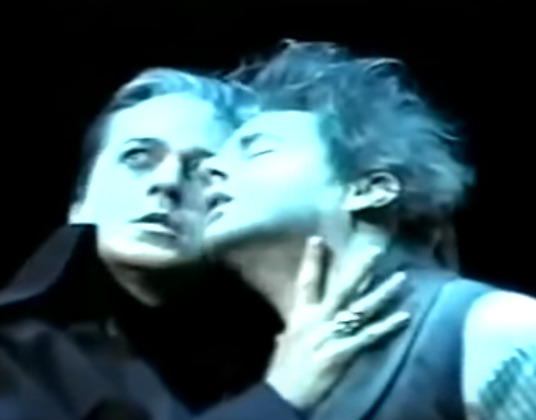
https://www.youtube.com/watch?v=3-v1O-asrHg
There is a deleted scene from Bram Stoker’s Dracula (1992) where Renfield laments that he has lost Dracula “to the pretty woman.”
In Love at First bite, and some other films Dracula actually does give Renfield immortality however. I suspect the Love at First Bite version is a half-vampire since he can go in the sun (this version of Dracula burns in daylight) and he still needs glasses for his nearsightedness but he has apparently worked for Dracula for at least a century so he was clearly granted immortality even if he can’t turn into a bat or hypnotize.

11. Carmilla Karnstein from The Batman vs. Dracula.
Carmilla is an odd one because in her original novel she’s portrayed as a lesbian. She is a vampire whose novel predates Dracula’s own novel. Her prey of choice are young virginal women. And she can turn into a large grey or black cat. She is powerful and independant and in The Batman vs. Dracula she somehow ended up Dracula’s wife. So I will assume this version is bisexual and they’re probably polyamorous and not at all monogamous.
The version of Dracula in Fred Saberhagen’s Dracula books, and the 1979 Dracula movie starring Frank Langella are also polyamorous though he claims Mina (Lucy in the 1979 film) is above the others. Poly-Romantic / Pan-Romantic / and Demi seem to be recurring traits for romantic versions of Dracula.
Dracula spends part of The Batman vs. Dracula trying to bring Carmilla back from the dead, using the very life essence and soul of VickI Vale to fuel the spell. Unfortunately things don’t quite go as planned.
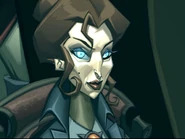
10. Dracula’s mysterious male lover from Marvel comics, Avengers issue 016 (2019).
Marvel’s Dracula has been confirmed as having had male and female lovers. This is not the only bisexual or panasexual Dracula in pop culture. The German production of the Frank Wildhorn Dracula the Musical (Dracula das Musical) gives him brides and grooms in his castle, Dario Argento has said his version of Dracula is bisexual, and Marvel has now confirmed that their version of Dracula has had male and female lovers.
I don’t know much about this pretty elfish, semi-androgynous character. Identified as a male vampire lover of Dracula’s from Marvel’s War of the Vampires storyline, Dracula wept blood tears when this unnamed character was killed. And he (the lover) was clearly willing to die for Dracula. So this spot is for you, you poor, unnamed elfish male vampire lover!
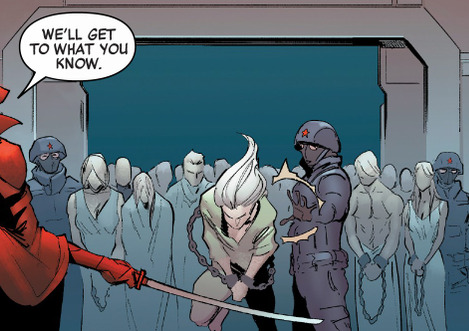

I don’t know his name so I am going to call him Samuel. And in my mind he was the pretty castle librarian whom Dracula became infatuated with. There. Headcanon achieved.
Further note: Usually if you make Dracula cry, it means he’ll take brutal and violent revenge. This is a universal truth with all versions of Dacula. Never make him cry.
I would put him at a MUCH better spot on this list but he doesn’t get a lot of time in the comic and we don’t know much about him. If we only knew more about him he would have a far better spot on this list. Look how adorable and tragic he is! He could easily be one of my favorites but all we know is that his death brought Dracula to tears and that yes, they were lovers. I seriously considered moving this one up the list but I’m bias for this sweet, androgynous, vampire-boy.
Seriously, I want to know this guy’s story. Dracula cries for him! In front of his enemies, he weeps for him! Give us this story, Marvel! Who is he???
9. Amy Peterson from Fright Night (original 1985 version).
This one is a bit dubious because the vampire is Jerry Dandridge but the 1985 novelization of the film suggested that Jerry is actually count Dracula. Fright Night played with popular vampire tropes and a few were homages to the 1960s soap opera, Dark Shadows. In Dark Shadows the vampire, Barnabas Collins, discovered that the young waitress (and later governess) Maggie Evans, was the uncanny look-a-like of his lost love, Josette. Because of the physical similarity he was convinced she was the reincarnation of his lost love even though with reincarnations you could literally end up looking like anyone or even being another gender after reincarnation. Barnabas had a painting of Josette that showed the physical similarity.
In Fright Night Jerry Dandridge meets Amy and becomes obsessed when he realizes how much she resembles a woman he, too, has lost and is pining for. When Jerry is finally destroyed by the has-been horror actor turned real vampire hunter, Peter Vincent, and also by Amy’s boyfriend, Charley Brewster, his last words are crying out for Amy.
Though this relationship is very one sided and Amy is clearly under age, when you’re a teenager (as I was) we can’t help but find ourselves fantasizing about being Amy in Jerry’s arms during the nightclub dance scene or the “Come to Me” scene. Because of problematic aspects of this relationship and because Jerry was never officially revealed as being Dracula in the film, that’s why this is at spot number 8.
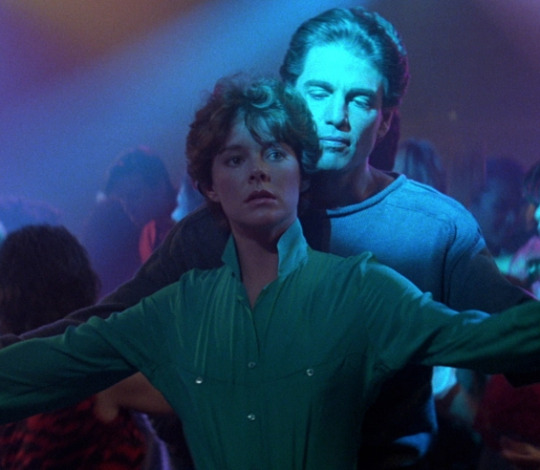
The Jerry Dandridge / Dracula character is apparently in a polyamorous relationship as he has a live-in (apparent boyfriend) Billy Cole. Billy does not exist in the 2011. Fright Night remake, which removed all romantic aspects of the character.
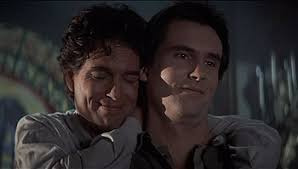
8. Evan Barrington-Cabot from the Graphic novel Series Dracula: The Company of Monsters.
In Dracula: The Company of Monsters graphic novel (published in 2011) an evil corporate executive known as Conrad orchestrates raising Dracula from the dead in the hope of using and exploiting him. Conrad’s nephew, Evan comes to understand and respect Dracula and Dracula’s code of honor. The two respect each other. And like with most stories where Dracula falls in love with the protagonist he decides to stalk him and declare him his.
When Dracula takes his revenge on his captors, Evan is the only one that he spares.
He even watches the young man sleep, the way Dracula is often depicted doing to female love interests. And he makes it very clear he plans on making him a vampire down the line.
This relationship is kept somewhat ambiguous otherwise I might consider putting it at a better spot on the list.
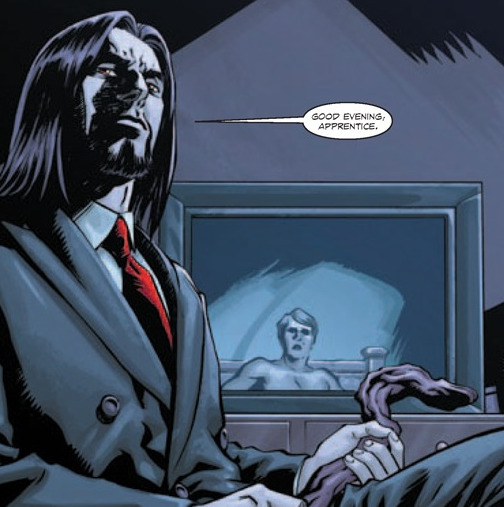
7. Ericka Van Helsing from Hotel Transylvania 3.
A direct descendant of Abraham Van Helsing (the famous monster hunter) Ericka has a cruise ship for monsters with the sole purpose of luring Count Dracula, whom falls in love with her. He “Zings.” Monsters supposedly can only zing once so there is a fan theory that she is the reincarnation of Mavis’ mother. This is likely true since reincarnation or look-a-like of a first love (or both) is a popular trope in vampire fiction started by Dan Curtis for his TV show Dark Shadows and later carried over into his Dracula movie starring Jack Palance.
Ericka ultimately realizes she loves Dracula too and the cruise ship captain and hotel owner end up together. Dracula proposes to her at the end of the film and she says yes.
Also though Dracula is several hundred years old in Hotel Transylvania he is physically in his forties, I suspect Ericka (as a mortal) is biologically older than him, which is a clever touch since Dracula is usually going after young girls in pop culture. It’s good to see him with an older (well, in appearance) woman. (”When you’re six hundred years old there’s no such thing as a cougar.” - The Emo Vampire Song.) Hotel Transylvania 3 is actually my favorite of the franchise and is a sweet film.

6. Cindy from Love at First bite.
Love at First Bite is a comedy from 1979. Think of Coming to America meets Splash in that a supernatural character, a proverbial fish-out-of-water comes to New York looking for love.
Dracula believes Cindy to be the reincarnation Mina (“But I lost her in that damn London Fog!”). He knows her from magazine pictures and interviews and after communists drive him out of his castle he moves to New York where he plans to seduce her. This consists of licking her ankles while in dog-form, telling her that she is more than merely her appearance, that he understands her and her anxieties. And dancing to “I love the Night Life”. The two ultimately fall in love and knowing the truth about Dracula, Cindy opts to spend eternity with him as his vampire queen. The ending has them fly off together, in bat form, to Jamaica.
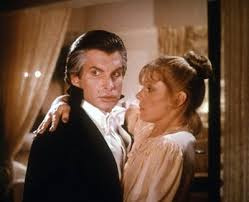

5. Lucy from Dracula (1979).
In the 1979 version of Dracula, Frank Langella plays Count Dracula. Though technically a remake and based on the same play the Bela Lugosi Dracula was based on, there are some distinct changes. For starters in this version the character we mostly know as Mina in most adaptations is named Lucy and the Lucy character is named Mina. The names are swapped.
Not only that but in this version it’s Dracula who is initially seduced. Though engaged to Jonathan Harker in Edwardian England (set roughly twenty years after most versions of Dracula, which are usually set in 1891) Dracula arrives for dinner at the home of his new neighbors. Here he offers to hypnotize the sickly Mina to relieve her of a headache (that he very likely induced). Lucy protests, showing her dislike and distrust of such methods and the manipulation of the will of others. This bold reaction delights Dracula as he is not used to conflict from women.
The next step in the possibly-accidental seduction of Dracula comes when Lucy turns on a phonograph record player and asks him to dance with her, improperly, right in front of her fiance.
And later after some tragedies, when the rest of the household is unable to uphold an invitation to Dracula’s house for supper, Lucy goes alone.
I like this one because in this one it’s mostly Dacula who gets seduced. Lucy wants him and she gets him. She knows what she’s doing. Also Dracula isn’t a whining, brooding, emo vampire. He is lonely but he LIKES what he is. He’s proud of what he is. He’s fierce and predatory and has all of his traditional powers, including being able to turn into a bat, and wolf, and conjure storms. So few adaptations remember the wolf form these days.
This was the first truly empowered version of the Mina character (though named Lucy). And she is not some look-a-like or reincarnation of a previous love. No. He simply falls in love with her for who she is.
It is very likely this version of Dracula is demi (falling in love with personality before any physical attraction) which is also true of the Castlevania version of Dracula and the version in Fred Saberhagen’s Dracula books.
Also based on the last dialogue from Dracula to Lucy (that he would return to her once they stopped hunting him) I choose to believe he faked his death in this version, especially by the wolf howl at the very end and the cryptic smile on Lucy’s face before the end credits. Long live The Count and Lucy!
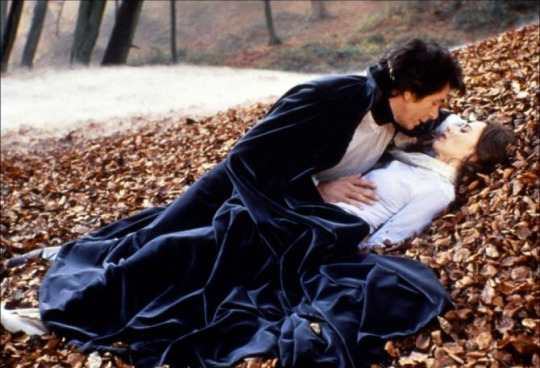
4. Mina from Fred Saberhagen’s Dracula books.
Very similar to Lucy in the 1979 Dracula starring Frank Langella, this is a romantic interest where Dracula sees the person as his equal.
This Mina is not the reincarnation of a lost love, nor does she resemble a lost love. When we first see this version of Mina it’s in the novel The Dracula Tape (retelling of Dracula from Dracula’s point of view.) Dracula shows up at her door to deceive her and try to manipulate her into getting the heroes to leave him be but she doesn’t fall for it. And she wrings the truth out of him. She’s clever and also manipulative and the two become lovers.
And in the contemporary world of the later books, though Dracula is having affairs with Mina’s own descendants (It’s a bit weird, I know but at least he’s honest about it.) he still seeks her for comfort and guidance. And constantly refers to her as his greatest love. It’s creepy yet sweet.
In this continuity he fakes his death at the end of the Dracula Tape. And when Mina finally dies of apparent old age she comes back as a vampire because his blood is in her system. As his kind of vampire can change their age based on how heavily they feed, she (like Dracula) can look any age she chooses. (Dracula usually looks roughly forty-five-years-old since that’s about the age he was when he died in his mortal life but sometimes he deliberately abstains from feeding to look older or even elderly.)
And with Mina to guide him, Dracula becomes the protector (and casual seducer...) of her mortal descendants.
Mostly the relationship and personality (as well as powers) are very similar to that of the 1979 Dracula film starring Frank Langella.

Another reason I like this version of Dracula is the cause of how he became a vampire is sort of ambiguous. He dies as the historic figure dies but in the Fred Saberhagen novel “A Matter of taste” (Book six of his Dracula novels) it’s revealed that loyalists stole his body and severed head and left a look-a-like in his place.
They prepared him for burial where candles kept going out and the wounds started to heal (including his head apparently re-attaching itself) so they hastily buried him. He rose as a vampire and insisted that it was a “transition of will” that he refused to die. In other words he has no idea how or why he came back as a vampire.
Considering most vampires in the Fred Saberhagen Dracula novels are created by a mortal drinking the blood of a vampire, after having been fed on, this made Dracula very unique and mysterious. I really like this origin. It’s my favorite origin for Dracula since it explains nothing while explaining everything.
It’s a lot better than someone renouncing God and drinking blood from a stone cross...
This one could easily be my favorite female love interest for Dracula, tied with the one I have listed for number 1 but I put two others between this and the number one spot because of their significance to pop culture and my love of some musicals.
3. Mina from Frank Wildhorn’s Dracula the Musical.
This is essentially the musical adaptation of the 1992 Bram Stoker’s Dracula movie. The biggest difference is there is no mention of Dracula’s mortal life’s wife and no suggestion that Mina resembles (or is the reincarnation of) an old love. The only problem is there is little explanation given as to why he falls in love with her other than that he seemed to have a mysterious psychic link with her all along.
Still, the songs are beautiful and the relationship is sweet and this version of Mina is very likable.
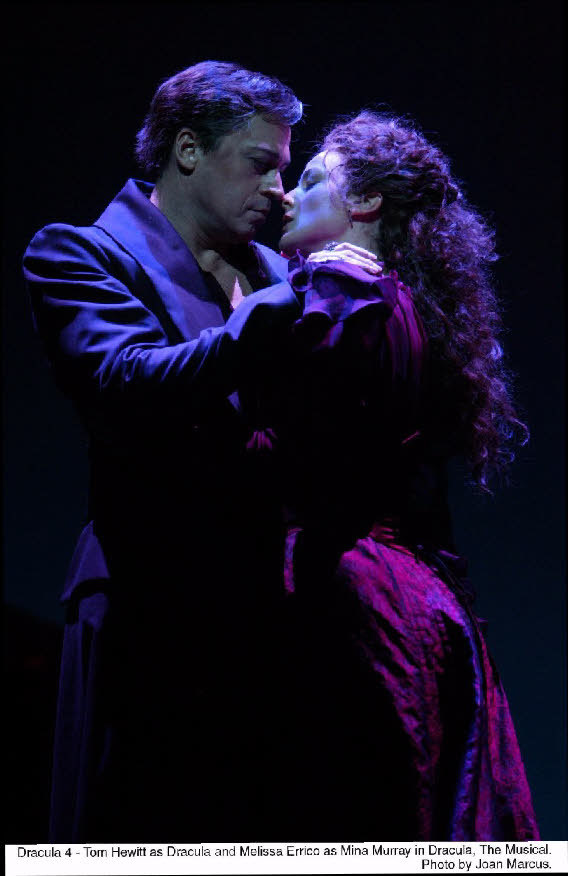
2. Mina from Bram Stoker’s Dracula (1992 film):
Before I proceed with this one, yes. Yes, I know Dracula and Mina are not actually lovers in the original Dracula novel. I know that when he makes her drink his blood in the novel that it’s more of a rape. But this version plays with the love story Dan Curtis created for his Barnabas Collins and later carried over into Dracula.
Dracula is seeking the reincarnation of his deceased mortal-life wife. And not only was he lucky enough to find her in a look-a-like body but she’s also the age the first wife was when she died (by total coincidence!). At first it seems like he just thinks she looks like his dead wife and he can seduce her but he seems shocked when she starts to actually remember details of his home. (watch his expression as she starts to talk about his homeland. He’s genuinely surprised).
The two begin a consensual love affair that sadly ends with Mina putting him out of his misery.
A least it’s implied he was forgiven and got to go to Heaven despite the things he had done (Much like in Stoker’s original novel. No, really, that’s in there.)
I like the Frank Wildhorn musical adaptation of this version of Dracula slightly better than the original non-musical movie because in the musical you don’t get the weird bleeding cross / renouncing God origin for Dracula’s vampirism. and 2. Mina doesn’t seem to be anyone’s reincarnation or look-a-like. They’re just in love (Even though yes, I know that is not in Bram Stoker’s novel.) But I do have a soft spot for this one because most of it does follow the novel and the musical probably would not exist if not for this movie.
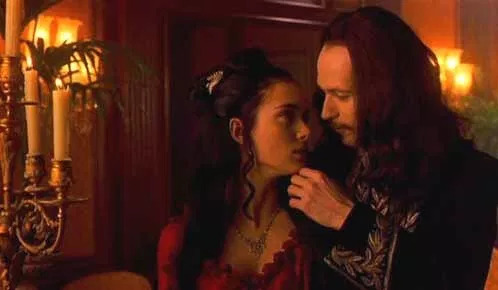
1. Lisa Țepeș from Castlevania.
Lisa fast became one of my favorite love interests for Dracula. She went to Dracula’s castle seeking knowledge and bravely stood up to the antisocial vampire.

Much like Lucy from the 1979 Dracula film she talked back to him. She was bold and brave. She wanted to learn and she wanted the ability to save lives and damn it, she would risk her own life to do it. Dracula fell in love with this personality almost instantly. It was her personality, not her physical beauty that he became infatuated with.
And they were both happily nerdy together. She humanized Dracula and reminded him that there is good in the world. Dracula married her and the two had a son together.
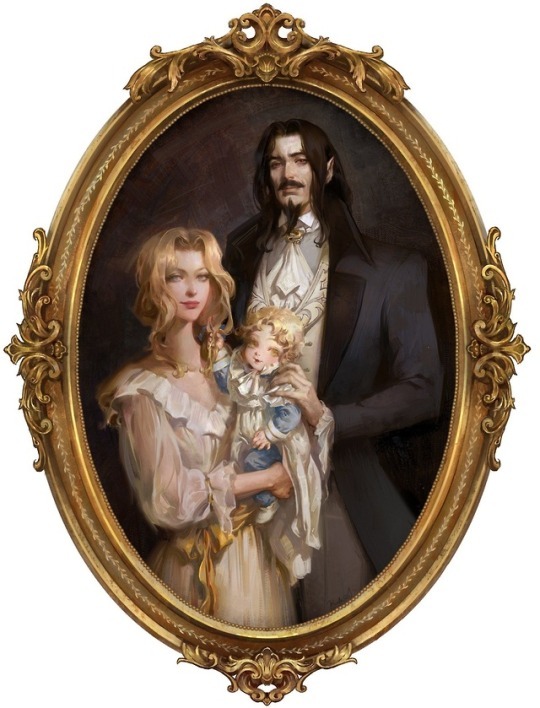
For her sake he learned to trust and love. But it was for that love that he was driven to madness by her death...
Lisa was only forty-five-years-old when she was burned at the stake as a witch while simply trying to help people as a medical doctor.
This version of Dracula was a good man deep inside but pushed to madness and governed by his vampiric instincts he couldn’t bear to be without her. And when she was murdered he blamed almost all of humanity (save for a select few) for it.
And so Dracula began a subconscious quest to be destroyed by going through the motions of wanting to destroy the world. This is not the only plot where Dracula plans to destroy the world and the protagonist catches on that it’s an elaborate and “world’s longest suicide note”. This was also done in the Hammer horror film The Satanic Rites of Dracula. But here it was for heartbreak of a deeply lonely man.

#Count Dracula#Lisa Tepes#Castlevania#Hotel Transylvania#Love at first Bite#Mina Harker#Bram Stoker's Dracula#Carmilla#Renfield#Ericka Van Helsing
96 notes
·
View notes
Text
A Brief Guide to Early Literary Dracula AUs
One of the coolest things about being a Dracula fan in the 2010s is all the recent publication of materials shedding light on all of the really bonkers alternate Draculas that either nearly became Dracula itself or spun off from the original 1897 text. So yeah... here’s a rundown of the three weird psuedo-canonical AUs that this fin de siecle vampire novel just sort of... comes with.
Stoker's Notes/Typescript/"Dracula's Guest"
Bram's notes for Dracula indicate that he worked on the novel for at least seven years, that it went through many substantial changes in its plot and cast, and that he had a lot of completely metal ideas that either fate, his editors, or his slender grip on good taste did not permit to appear in the final novel. Some of these things appear in fragmentary form in the typescript for Dracula. Some of them got recycled into a short story later published as "Dracula's Guest." Some of them only appear scrawled in Stoker's atrocious handwriting on the various papers collected at the Rosenbach in Philadelphia.
Highlights:
Things initially were going to take place in Styria and the villain's name was going to be Count Wampyr.
Arthur doesn't exist and Jack/Lucy is canon.
Jonathan Harker has a "shrewd, skeptical sister."
There's a third heroine named Kate Reed (or Kate Lee) who is school chums with Lucy and Mina and apparently helps to spread the flow of gossip about Lucy and her curly-hair beau going to St. James concerts.
There's a painter named Francis who probably discovers that the Count (in addition to having no reflection and showing up as a skeleton in photographs) cannot even be painted.
Other unused characters include a philosophic historian, a paranormal investigator, and a pair of deaf/mute servants in the Count's employ.
The Count has a secret chamber where everything is blood red, and it's apparently really scary.
Quincey might be a professional inventor named Brutus Marix. He also might go to Transylvania in the middle of the book. Also, he just might SAVE THE DAY DURING THE FINAL BATTLE BY OPENING FIRE WITH AN EARLY FORERUNNER TO THE MACHINE GUN.
There appear to have been werewolves planned.
Jack has a spooky party at his house where everyone has to tell a ghost story like they're living it up at the Villa Diodati. Dracula shows up and is the thirteenth guest at this super goth affair and presumably tells the spookiest story of all.
Jonathan spends three chapters/100 pages doing all sorts of crazy stuff that happens before what we now think of a Chapter 1 of Dracula. These shenanigans include encountering the Count pretending to be dead in a Munich leichenhaus, going to see a performance of The Flying Dutchman, and doing all that incredibly spooky stuff in "Dracula's Guest" where he has adventures with wolf friends on Walpurgisnacht.
Castle Dracula sinks into the earth in a VOLCANIC EXPLOSION after Dracula dies.
There is also mention of Dracula FLYING out of his coffin into the air during the final confrontation and the Brides getting taken out by chance BOLTS OF LIGHTNING.
Seriously. We have legitimate evidence that were we but in the true and righteous timeline, Dracula would have ended with lightning bolts and machine guns going off in an aerial vampire battle before a volcano explodes.
Makt Myrkranna (AKA Powers of Darkness AKA Icelandic Bootleg Porno Dracula)
So a few years after Dracula was published, it appears that somebody in Sweden ripped it off, made it much much more Hammer Horror, and published it as their own thing called Mörkrets Makter (Powers of Darkness). Then, after that, Valdimar Ásmundsson in Iceland ripped that off and republished it as his own thing called Makt Myrkranna (...also Powers of Darkness). This latter work just got translated into English in 2017, and there's been intense speculation as to whether or not whomever originally wrote this thing had anything to do with Bram Stoker and his early drafts for the novel, given that it is headed by a preface that is controversially claimed to have been written by Bram, himself.
Highlights:
The first four chapters of the book (the ones everyone tends to really like) are now massively massively expanded, and Jonathan Harker (now named Thomas) gets to spend much more time exploring the castle, trying to escape, having the Count tell him creepy sexual anecdotes, and watching busty women get murdered.
The three women in the castle have been condensed into one woman, who seems to be the Count's vampiric, incesty bride/cousin/whatever and whose death involved her being locked in a bedroom with her lover until he went mad and threw himself out a window.
Instead of finding a secret room of boxes with dirt in them, Jonathan Thomas finds a secret ritual orgymurder room where primordial ape men engage in forbidden revels while the Count bites hypnotized virgins to death.
Everything that is not in the massively expanded castle section is barely sketched out summaries of lots and lots of wacky things happening with no real explanation (apparently these portions were treated with more detail in at least one version of Mörkrets Makter, but that's not available in English yet).
Lucy (now Lucia) becomes a vampire, but she is never staked, and her plot is never really resolved. Arthur, convinced she is alive after people watch her get back up from being dead, orders that people leave out some blankets and snacks for her (very considerate), and then that thread just sort of ends.
Renfield doesn't exist. Jack sort of makes up for this gap in the novel's tragically dead madmen quota by going mad and dying himself.
Said going mad and dying is facilitated by him attending one two many freaky mesmerism parties at Carfax with the Count's posse of debauched, anarchist, international conspirator, orgymurder cultist noblemen.
Then like... a mysterious violinist shows up at his asylum and the next thing you know, the Count & Co. have taken over the joint, Quincey has to pretend to go crazy to infiltrate, and the entire place burns down.
There is actually some sort of police investigation into all of the many many many illegal things going on. After Van Helsing knifes Dracula to death, Quincey takes the fall for him, but the investigators don't end up taking him to trial.
Kazıklı Voyvoda (AKA Impaling Voivode AKA Dracula in Istanbul AKA Turkish Nationalist Propaganda Bootleg Dracula)
Taking a cue from Ásmundsson and whomever the Mörkrets Makter guy is (or not...), Turkish author Ali Rıza Seyfi wrote his own pirated version of Dracula and published it as his own work in 1928. Unlike the Makt Mykrannaverse, the world of Kazıklı Voyvoda is fairly faithful to the original text... save that the action is transposed from London to Istanbul, the events of the story now postdates the Turkish War of Independence, and the entire cast (Dracula excepted) is now very Turkish and very fond of waxing eloquent about their immense national pride in being very Turkish.
Highlights:
Dracula is explicitly identified as being Vlad III, and he is a marauding terrible foreign menace from the exotic West, persecuting the good Eastern folk of Istanbul just as he historically persecuted and impaled their ancestors before them. Anyone who has ever read and enjoyed any academic essay on Dracula and the colonial gaze may begin to salivate uncontrollably.
Forty-seven years before Salem’s Lot, Seyfi establishes that pretty much any religious symbol works on a vampire if you believe in it, and everyone throughout the text waves around charms made out of suras of the Koran and such to great effect.
Azmi (Jonathan) gets the tiniest scraps of expanded backstory in which we learn about his childhood predisposition towards fainting and the existence of his pious mother who took him to saints’ shrines in the hopes he might faint less.
Güzin (Mina) is no longer one of Dracula’s victims (unlike in the 1953 film adaptation of this book). She is, however, still an incredibly hardcore researcher nerd who makes sure to tell her fiance all sorts of cool Vlad III history facts.
Turan (Arthur), Afif (Jack), and Özdemir (Quincey) all served together during the war and became bros that way instead of just being three guys who went on crazy globetrotting adventures together before all independently deciding to propose to the same girl.
Resuhȋ (Van Helsing) makes sure to drop a line reminding everyone of that time they all did blood tests and found out their blood types are compatible... you know... just in case anybody in this post-blood-typing era might be doing a bunch of blood transfusions and worrying about fatal hemolytic reactions.
#Bram Stoker#Dracula#Powers of Darkness#Dracula in Istanbul#Valdimar Asmundsson#Makt Myrkranna#Morkrets Makter#Ali Riza Seyfi#Kazikli Voyvoda#Drakula Istanbul'da#vampires#assault
1K notes
·
View notes
Note
Hi! 🦇 Friendly reminder about your AU Lucy Westenra plot (context: My KMG characters who deserved better ask where you mentioned the plot in the replies). 🦇😊 I'm actually about to go on holiday for under a week, so please feel no rush with sharing it. I'd be honored to read it some time. You've quite the way with words. 😄🌸🌷🌹🥀🌻🌼🌺 Hope you have a lovely day/night, friend.
((this is a long one! more under the cut))
((cw for abusive 19th Century mental health institutions and unhappy coming out stories, but also for badass lesbians living their true lives))
In my version, the show diverges shortly after Lucy is manipulated into confessing her feelings for Mina, both to Mina herself and to her parents. Her parents react horribly to what Lucy confesses about her feelings for women, and have her committed to the facility run by Mina’s father.
Dr. Murray is kind, and progressive for his time. After the requisite intake interview, he determines that Lucy isn’t mad at all. When Mina comes to him, panicked upon finding out what had happened to her friend, he tells her that Lucy’s feelings are as natural as the love between a man and a woman. It is not an illness, or a psychosis.
(As an aside, Dr. Murray remarks how brave Lucy must have been to confess the truth to her family-- or anyone, for that matter, given how averse society is to anything that is different. At that, Mina starts to feel badly at how she’d reacted.)
Despite nothing being wrong with her, Dr. Murray lets her remain in his facility, where she is treated well and Mina visits everyday. They start to rebuild their friendship, and heal from their recent rift, but Lucy’s family starts getting impatient when little progress is made. Despite Dr. Murray’s warnings that her parents likely will not accept her homosexuality, Lucy refuses to pretend otherwise, refuses to conform. Bolstered by what Lady Jayne had said to her/made her feel, and with Mina’s renewed faith in her, she staunchly refuses to get married asap as her father demands.
Dr. Murray tries to explain to Lucy’s parents, but they refuse to believe their daughter is healthy. After a time, when they realize Mina has been visiting so often, they wonder whether Lucy’s friendship with Mina is what “corrupted” her. They remove Lucy from the Murrays’ care and admit her to another, less savory institution.
The new facility is cold, and dark-- visiting hours are shorter, and farther between. Mina tries to visit as often as she can, but she’s often restricted from doing so-- according to the people who turn her away, Lucy is often ill, or has refused visitors herself, or lost privileges for reasons unknown.
The few times Mina does get to visit her, Lucy seems less and less like herself. She loses her vivacity, and says very little. She grows pale and withdrawn, and during their final visit, Lucy breaks down and confesses her fear of remaining in that facility even one more day, begs for Mina’s help. Mina vows to act, even as the orderlies come to end their visit early.
Mina immediately goes to Jonathan for help. She shares everything, from the change in Lucy to the way the asylum has restricted their visitation, to the bruises she’s noticed on Lucy’s wrists and the orderly she recognized who used to work for her father (and was fired for being too rough with the patients). Jonathan listens to it all, and then takes Mina by the hand and tells her there’s nothing they can do.
Lucy is unmarried, he reminds her, and as such her care is at the discretion of her family.
Horrified by his lack of compassion, Mina runs to Alexander. He wastes no time in taking action-- Mina almost has to run to catch up as he returns with her to the asylum to break Lucy out that night. They find her, drugged and with a new bruise staining her cheek. Ignoring the protests of the nurses, then the orderlies, and then the head administrator, Alexander has his man Renfield scoop Lucy up and carry her to their carriage.
They install Lucy in one of the many spare rooms in Alexander’s home, and Mina stays with her as she recovers. When Jonathan comes to find Mina, she sends him away. His lack of compassion that afternoon has made her seriously reconsider their engagement, and for now, her priority is Lucy. She will contact him when she is ready.
Though Lucy’s health returns, her spirit remains tempered by her ordeal. She doesn’t speak much, about anything, though she is gracious and grateful for Mina’s and Alexander’s help. When Lucy’s father learns what happens and comes looking for Lucy, Alexander heads him off at the door. Lucy clings to Mina and listens as her father’s bellow carries down the corridor: Lucy is no longer welcome in their home. The Westenras have no daughter.
Eventually Lady Jayne learns what happened. She calls on Lucy, both out of guilt and in genuine concern. To her surprise, when Lucy harbors no anger for Jayne’s role in what happened to her. Lucy instead speaks at length for the first time, and confesses that while she knows Jayne manipulated her for reasons she can’t discern, Lucy is still grateful to her.
Whatever Jayne’s reasons for manipulating Lucy that day, their time together helped Lucy come to terms with who she was. She had plenty of chances to earn her freedom-- she could have denounced her nature, claimed to have been mistaken, gone home and married her current suitor posthaste. But because Jayne had validated her feelings for Mina, shown her the life she could have, and what true happiness might look like, Lucy remained true to herself and refused to be shackled to a life of being nothing more than a man’s wife.
Jayne regrets her part in what happened. But as Lucy speaks, calm and determined and resolute in the choices she made for herself, Jayne sees a spark of something familiar. She offers to teach Lucy how to live independently, how to fight, and live without answering to any man.
Lucy agrees, without hesitation.
She leaves with Jayne that afternoon, and goes to stay with her. As Mina tries to reconcile her failing engagement with Harker and address the strange attraction she feels for Alexander, Lucy learns the way of the hunter. Somewhere between throwing her first punch and holding her first crossbow, the fog of trauma lifts, and in its wake Lucy finds a deep, abiding anger. It lends her an aggression that makes her a quick study, and the moment Jayne treats her as a capable student (and not just as a pretty face, as everyone else in her life has ever done), Lucy begins to flourish.
The next time she and Mina meet, Mina instantly notices the change in her. Lucy has never been demure, but she now carries herself with a new self-assuredness, no longer reaching for the world but letting it to come to her. Her smiles come less easy now, but her charm still oozes from her, in the way she carries herself, in her confidence, and the way she speaks expecting to be heard. Most notably changed is the sharp gleam in her eye, just spoiling for a fight.
And fight she does. She shadows Jayne on her nightly prowls, first as an observer and then an active participant. They make a good team, and before long they are nearly equals, close friends and sometimes lovers (though never romantic partners). One night, however, one of their vampiric opponents throws Lucy off-kilter-- the orderly who had once worked for Mina’s father, turned only a short time ago. He gets away in the moment of Lucy’s hesitation, but it gives them the unexpected chance to follow him back to his lair…
Which turns out to be the very asylum Mina had helped Lucy escape. The place is crawling with vamps, mingling with innocent patients. With the help of other hunters, they clear out the place, sneaking the human patients out to the safety of Dr. Murray’s facility, while sealing the inhuman occupants inside. They torch the entire building, and Lucy watches with Lady Jayne at her side as vampires scream and perish within.
They don’t save everyone. Some of the recent turns had been patients-- people Lucy had met during her brief stay. While she would hesitate to call them friends, they were victims, and Lucy’s empathy extends to them readily. She resents that they were so vulnerable, that no one noticed that evil had taken hold in that building long before the vampires came. Anger coils inside her, hot and volatile.
The Hunters officially accept Lucy into their ranks that night, and share what their true purpose had been, when they allied with the Order of the Dragon centuries ago. So with a belly full of righteous anger and the full might of her fellow Hunters at her disposal, Lucy Westenra sets her sights on Dracula.
A/N: This was my first blush story arc, and having spent time tidying it up for blog purposes, I’m now wondering whether the asylum bit is necessary. I mean, it’s certainly not outside the realm of historical realism, but I’m asking myself whether another lesbian being treated poorly is the story we need to see, so that part is open to change.
The important part is that instead of Jayne being a horrendous bitch and then dying, she takes baby-lesbian Lucy under her wing and teaches her to spit in the face of contemporary convention by being a kick ass Huntress. It also brings Lucy back into the Dracula arc again, on her own terms.
15 notes
·
View notes
Text
Gemini May World Dracula Day
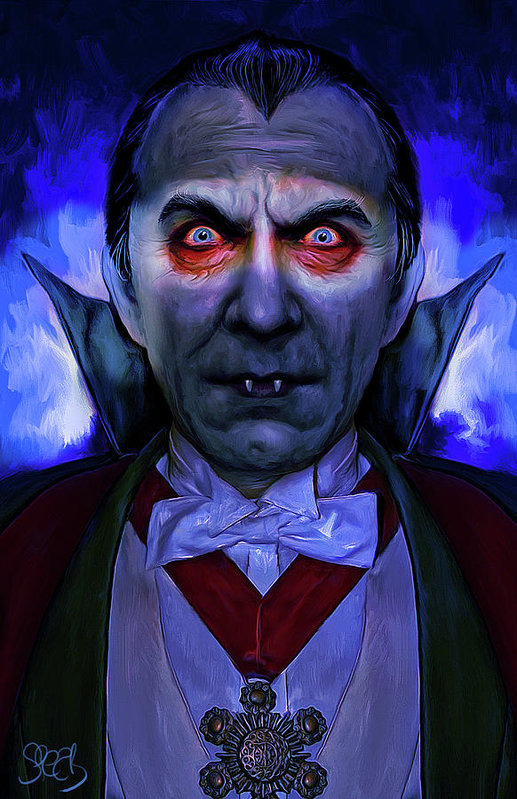
By shirleytwofeathers
May 26 is World Dracula Day which commemorates Bram Stoker’s Gothic horror novel Dracula, which was first published on May 26 in 1897, by Archibald Constable and Company in Britain. It sold for six shillings and came bound in yellow cloth with red lettering. It was first printed in the United States two years later, by Doubleday & McClure of New York City. Although not the first novel about vampires, it became a model for the genre, and laid the foundation for future vampire stories, with its introduction of the character Count Dracula.
The quintessential vampire, Count Dracula has inspired tens of films and stories the world over, not to mention the virtual immortality of the character during as a beloved Halloween character. For all of these reasons, it’s undeniable that this icon of horror more than deserves his own little holiday so the world can show its appreciation for his contributions to the worlds of cinema and literature over the centuries. So put on your fangs, and let’s sink out teeth right into this, shall we?
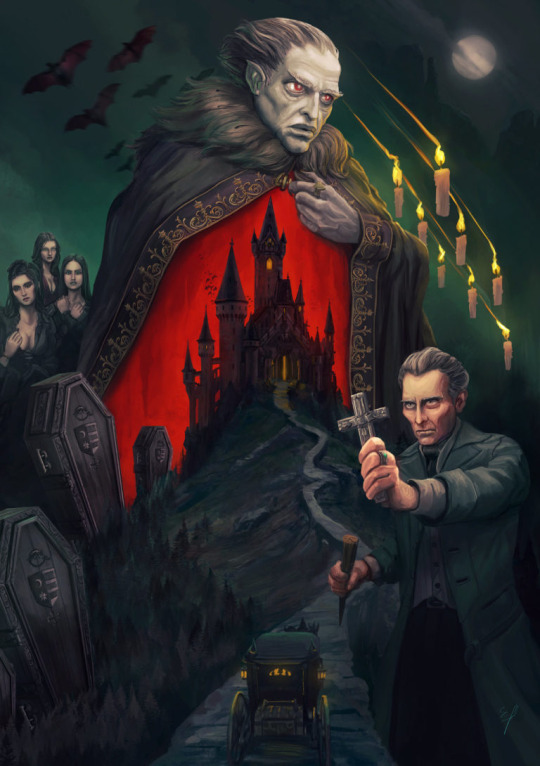
About The Book
The book follows (spoiler alert!) an English lawyer named Jonathan Harker as he travels to Transylvania to meet Count Dracula at his castle, Castle Dracula. To Harker, Dracula appears pale and off-kilter. The strangeness of Dracula is more apparent after he lunges at Harker’s throat after Harker cuts himself while shaving. Harker eventually finds out that Dracula is a vampire who needs to drink human blood to survive. Afterward, Dracula locks Harker in the castle and flees to England with 50 boxes of dirt (it is believed he needs dirt from his home country to stay healthy). As Dracula heads to England to search for new blood, Harker eventually escapes from the castle.
Meanwhile, Mina, Harker’s fiancée, is visiting her friend Lucy in England. One night, Mina finds Lucy sleepwalking by a graveyard. Mina believes she sees a creature hovering over Lucy for a moment, and then notices two red marks on Lucy’s neck. Lucy becomes sick over the next few days and is then cared for by a Dr. Seward and by Dr. Abraham Van Helsing, before eventually dying. Afterward, strange reports begin surfacing that a creature has been attacking children in the area.
Jonathan Harker and Mina are reunited and married. Harker tells Dr. Helsing about his experience with Dracula, and Helsing then believes Lucy contracted vampirism from him and is the one attacking children. They dig up her corpse, cut off her head, put a stake through her heart, and stuff her mouth with garlic. They then turn their focus to Dracula and try to destroy his boxes of dirt. He escapes back to Transylvania, where they find him buried in the last box of dirt. They cut off his head and stab him through the heart, causing him to collapse into dust.

The Origins Of Dracula
Stoker spent years researching vampires before writing Dracula. During that time, he was particularly influenced by “Transylvanian Superstitions,” an essay by Emily Gerard that was published in 1885. Stoker worked at the Lyceum Theatre in London from 1878 to 1898. The theater was headed by Henry Irving, who Stoker based Dracula’s mannerisms on. It was even Stoker’s hope that Irving would play Dracula in a stage adaptation, but it did not happen.
According to one theory, Prince Vlad III of Wallachia (Romania) was the real-life inspiration behind Stoker’s gothic horror novel. An extremely cruel and merciless ruler, Vlad earned the nickname “Vlad the Impaler” for the many ways he tortured his opponents as well as people who betrayed him when they were captured. As can be guessed from his nickname, impaling was his favourite method of execution, and it is thought that he killed up to 100,000 people during his reign, and was infamous for the “forests” of impaled victims he left behind when he won a battle. One unsubstantiated account says that he dipped bread in his victims’ blood and ate it in front of them as they died on stakes.
Born in Transylvania in the fifteenth century, he was also called Drăculea, which means “Son of Dracul.” Indeed, his father was known as Dracul, a name that derived from the knightly order he belonged to—the Order of the Dragon (the Latin word draco means dragon). In modern Romanian, drac means “devil.”
It is believed that Stoker picked the name Dracula after learning this more modern translation. Some believe that the only connection between Vlad III and Dracula are their names. The connection of his character with vampirism was made by Bram Stoker around the 1890’s, and has become a permanent element of pop culture since then.
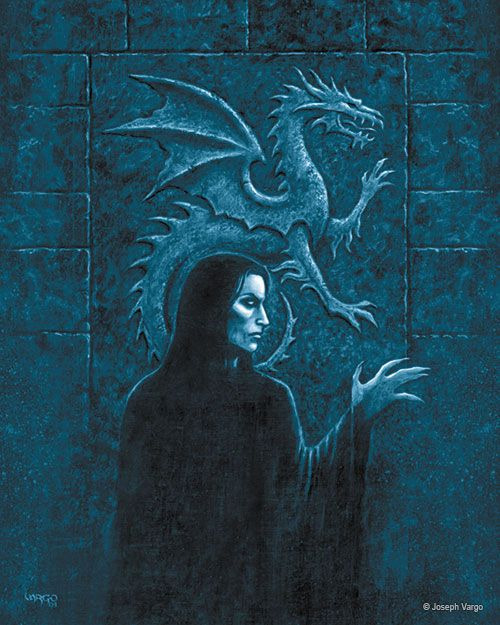
What does it mean?
Dracula has been interpreted in numerous ways. Some have interpreted the story as an allegory of the fear that western Europeans had of eastern Europeans coming into their area. Hence, the story of someone coming from Transylvania—in Romania—to London and wreaking havoc on its residents. This theme appeared in other novels of the time.
Some have seen the book as a reaction to the conservative and patriarchal norms of the Victorian period, and as an exploration of suppressed sexual desire. Some also have seen the book as being about the relationship between the past and future, with Dracula symbolising a primitive past that challenges modernity.
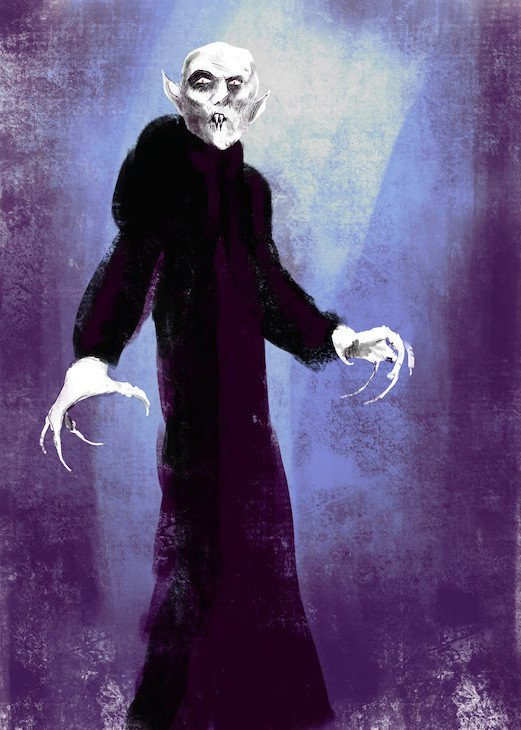
The Historical Vampire
The concept of vampirism dates back thousands of years. The ancient Greeks, Hebrews, Egyptians and Babylonians all had legends telling hair-raising tales of demon-like undead creatures that lived off of the blood of the living.
Tales of the undead consuming the blood or flesh of living beings have been found in nearly every culture around the world for many centuries. Today we know these entities predominantly as vampires, but in ancient times, the term vampire did not exist; blood drinking and similar activities were attributed to demons or spirits who would eat flesh and drink blood; even the devil was considered synonymous with the vampire.
Almost every nation has associated blood drinking with some kind of revenant or demon, from the ghouls of Arabia to the goddess Sekhmet of Egypt. Indeed, some of these legends could have given rise to the European folklore, though they are not strictly considered vampires by historians when using today’s definitions.
Hebrews, ancient Greeks, and Romans had tales of demonic entities and blood-drinking spirits which are considered precursors to modern vampires. Despite the occurrence of vampire-like creatures in these ancient civilisations, the folklore for the entity we know today as the vampire originates almost exclusively from early 18th-century Southeastern Europe, particularly Transylvania as verbal traditions of many ethnic groups of the region were recorded and published. In most cases, vampires are revenants of evil beings, suicide victims, or witches, but can also be created by a malevolent spirit possessing a corpse or by being bitten by a vampire itself. Belief in such legends became so rife that in some areas it caused mass hysteria and even public executions of people believed to be vampires.
In India, tales of vetalas, ghoul-like beings that inhabit corpses, are found in old Sanskrit folklore. Although most vetala legends have been compiled in the Baital Pachisi, a prominent story in the Kathasaritsagara tells of King Vikramāditya and his nightly quests to capture an elusive one. The vetala is described as an undead creature who, like the bat associated with modern-day vampirism, hangs upside down on trees found on cremation grounds and cemeteries. Pishacha, the returned spirits of evil-doers or those who died insane, also bear vampiric attributes.
The Hebrew word “Alukah” (literal translation is “leech”) is synonymous with vampirism or vampires, as is “Motetz Dam” (literally, “blood sucker”). Later vampire traditions appear among diaspora Jews in Central Europe, in particular the medieval interpretation of Lilith. In common with vampires, this version of Lilith was held to be able to transform herself into an animal, usually a cat, and charm her victims into believing that she is benevolent or irresistible. However, she and her daughters usually strangle rather than drain victims, and in the Kabbalah, she retains many attributes found in vampires.
A late 17th- or early 18th-century Kabbalah document was found in one of the Ritman library’s copies of Jean de Pauly’s translation of the Zohar. The text contains two amulets, one for male (lazakhar), the other for female (lanekevah). The invocations on the amulets mention Adam, Eve, and Lilith, Chavah Rishonah and the angels—Sanoy, Sansinoy, Smangeluf, Shmari’el, and Hasdi’el. A few lines in Yiddish are shown as dialog between the prophet Elijah and Lilith, in which she has come with a host of demons to kill the mother, take her newborn and “to drink her blood, suck her bones and eat her flesh”. She informs Elijah that she will lose power if someone uses her secret names, which she reveals at the end.
Other Jewish stories depict vampires in a more traditional way. In “The Kiss of Death”, the daughter of the demon king Ashmodai snatches the breath of a man who has betrayed her, strongly reminiscent of a fatal kiss of a vampire. A rare story found in Sefer Hasidim #1465 tells of an old vampire named Astryiah who uses her hair to drain the blood from her victims. A similar tale from the same book describes staking a witch through the heart to ensure she does not come back from the dead to haunt her enemies.
More about Vampires can be found at The Powers That Be.
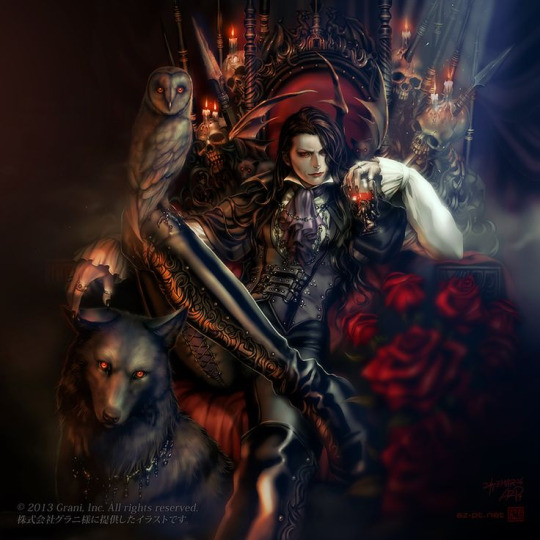
How to celebrate Dracula Day
Celebrating all things Dracula why not throw a party and get your friends round for the ultimate film binge. Ideas for creating the perfect atmosphere include giving your party a Gothic feel by making sure all of your decorations are either black or blood red, the table setting is rather sophisticated, everyone is dressed elegantly and wears fangs, hanging up plenty of bat and spider web decorations, and serving plenty of blood red drinks.
It would also be perfect to watch one or more of the classic vampire movies to have been made, such as the 1958 British classic titled simply “Dracula”, and starring the incredibly impressive Christopher Lee as the aristocratic titular character. Other movie choices include “Nosferatu”, a 1922 German expressionist horror film, and “Interview with the Vampire” starring Tom Cruise, Brad Pitt, and a young Kirsten Dunst.
If it’s something more lighthearted you’re looking for, Roman Polański’s “The Fearless Vampire Killers, or Pardon Me, But Your Teeth Are in My Neck” will keep everyone entertained. Lesser known, but equally fun movies include Suck (one of my personal favourites), and Jesus Christ Vampire Hunter.
If you don’t plan on hosting a party, that does not mean you have to miss out on Dracula day—take the time to delve into the world created by Bran Stoker in his acclaimed novel. Reading a good book has never hurt anyone, and in the era social media’s 140-character blurbs of text, it is ever more important to keep the art of literature alive.
If you’ve already read it, consider tackling Anne Rice’s “Vampire Chronicles”, a series of 11 critically acclaimed books that follow influential vampires all throughout history. Stephen King’s “Salem’s Lot”. As you can see, there is no shortage of ways to celebrate the vampires of the world this Dracula Day!
Vampire Magick:
If you get really excited about all this talk of vampires, blood, and the undead, you might even be interested in exploring spells to “become a vampire.” Alternatively, you might want to play around with some protection against vampires spells, vampire prevention spells, or even a peaceful coexistence spell. They can all be found in the Book of Shadows, and Gypsy Magick and Lore.
Sources:
Days Of The Year
Checkiday
Wikipedia
https://shirleytwofeathers.com/The_Blog/pagancalendar/category/may-holidays/
1 note
·
View note
Text
Dracula (1974) – Episode 61 – Decades of Horror 1970s
“You are now in my domain gentlemen, and you shall not leave.” Doc Rotten is still on hiatus, diligently working on the next issue of the Gruesome Magazine quarterly print and electronic editions, but Chad Hunt, Bill Mulligan, and Jeff Mohr are back, along with guest-host Joey Fittos, to take that familiar journey from Transylvania to England, this time as told by producer/director Dan Curtis in 1974’s Dracula.
Decades of Horror 1970s Episode 61 – Dracula (1974)
Originally released as Bram Stoker’s Dracula until the rights to that name were acquired for Francis Ford Coppola’s 1992 version, the film is now sometimes referred to as Dan Curtis’ Dracula. This TV movie was scheduled to premiere in October 1973 but was preempted by news coverage of an unfolding historical event and rescheduled for February 1974.
This episode’s Grue Crew discuss Emmy winner Curtis’ start as the creator and executive producer of the daytime, horror/soap opera Dark Shadows (1966-71). He then went on to direct and produce a number of horror-related movies in the 1970s: The Night Stalker (1972) and The Night Strangler (1973), several TV-movie adaptations of well-known horror novels, and the theatrically released Burnt Offerings (1976).
Though your hosts find the script lacking in places, they do give props to frequent Curtis collaborator and horror icon Richard Matheson, who penned the screenplay for this version of Dracula. Despite this script’s faults, Curtis and Matheson do use a plot device lifted from Dark Shadows that doesn’t appear in Bram Stoker’s novel or any previous film versions but is used again by Coppola in Bram Stoker’s Dracula.
Academy Award winner Jack Palance tackles the title role. Curtis and he had worked together before on another TV movie, The Strange Case of Dr. Jekyll and Mr. Hyde (1968). Chad, Bill, and especially Jeff, appreciate the feral quality of Palance’s performance, but Joey says, “He’s not my Dracula.” The rest of the cast - Nigel Davenport (Van Helsing), Murray Brown (Jonathan Harker), Fiona Lewis (Lucy), Penelope Horner (Mina), and Simon Ward (Arthur) - don’t have much to work with, possibly leading to their seemingly lackluster performances. The crew also point out that many of our listeners may recognize Sarah Douglas, one of Dracula’s brides, who later played Ursa in Superman (1978) and Superman II (1980).
When all's said and done, Mr. Fittos gives Dracula (1974) thumbs down. Though Chad and Jeff admit it doesn’t hold up to impressions from their first viewings, the other hosts think it is worth the watch for Palance’s performance.
We want to hear from you – the coolest, grooviest fans: leave us a message or leave a comment on the site or email the Decades of Horror 1970s podcast hosts at [email protected].
Check out this episode!
0 notes
Text
Dracula has far too many kids!
I’ve decided to compile a list of all the known pop culture offspring of Count Dracula that I know of. Here we go. I am putting a ? next to ones where I am not sure Dracula is the father.
I know this is not a complete list. This is just all the off-spring that I, personally, know of.
Countess Marya Zaleska - Dracula’s Daughter (film) Count Alucard (possibly Dracula himself, semi-ambiguous) - Son of Dracula (Film) ? Sibella - Scooby Doo and the Ghoul School (animated film) Draculaura - Monster High (Franchise) Mavis - Hotel Transylvania (Franchise) Adrian Fahrenheit Țepeș / Alucard - Castlevania (Franchise) Vladimir Dracula - Young Dracula (TV series) Ingrid Dracula - Young Dracula (TV series) Vlad - Dark Prince: The True Story of Dracula Îngeraș - Dracula: Untold (film) Quincey Harker - Dracula: The Un-Dead (novel) / Fred Saberhagen’s Dracula books (sort of. It’s complicated. Novel.) Lucy Harker - Fred Saberhagen’s Dracula books. (Sort of. It’s complicated.) Little Dracula - Little Dracula (Animated series) Drak Jr. - The Drac Pack (Animated series) Lilith Drake - Marvel Comics Vlad Tepulus - Marvel Comics Janus - Marvel Comics and Dracula: Sovereign of the damned (anime) Xarus - Marvel Comics D - Vampire Hunter D (Franchise. Only hinted at). - ? Ferdinand - Dracula and son (Film) Lily Munster - The Munsters / Mockingbird Lane (debatable since her father answers to Sam Dracula in The Munsters but he’s implied to actually be Dracula in the Mockingbird Lane version). ? Dick - Grimm Adventures of Billy and Mandy (Cartoon) The Wolf - (a literal wolf. The result of Dracula in wolf form mating with a she-wolf) Quincey Morris: Vampire (novel)
The three female vampires in the castle - The original Dracula novel. (The first time they were called brides was in the 1931 Universal monster movie. In the actual novel Jonathan Harker suspected they were Dracula’s daughters and noticed similar physical traits including nose shape.)
Mihnea - Historic first born son ? - Historic unknown second son Vladislaus Drakulya AKA Vlad IV or second Dracula of the house name - Historic. ______________________________________
Bonus: Dennis - Hotel Transylvania Franchise (Grandson) Frank Drake - Marvel Comics and Dracula: Sovereign of the Damned anime. (Descendant) The Southerlands - Entire bloodline of Mina Harker (Fred Saberhagen’s Dracula books) Irwin - Grandson - Grimm Adventures of Billy and Mandy (animated series) __________________________
The lesson here: Dracula has far, far too many kids!

18 notes
·
View notes